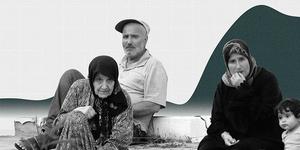This article is the first in a series about life in Israel and in the West Bank and East Jerusalem almost one year after Hamas attacked Israel on Oct. 7, and the Israel-Hamas war began.
Note: Gallup’s past surveys in the State of Palestine* have included Gaza. Gallup was not able to survey Gaza in 2024 because of ongoing security issues. The data in this article represent the views of Palestinians living in the West Bank and East Jerusalem. Jewish Israeli-majority areas within the West Bank and East Jerusalem are not included.
LONDON -- Nearly a year after Hamas attacked Israel, setting off the Israel-Hamas war, hopes for peace remain scarce. In Gallup surveys conducted in July and August of this year, few people in Israel or the West Bank and East Jerusalem think peace will ever be reached in the long-running conflict between Israel and Palestine. Two-thirds of people living in Israel (66%), and in the West Bank and East Jerusalem (68%), think a permanent peace will never be achieved.
In Israel and the West Bank and East Jerusalem, hopes for peace inched up slightly this year compared with 2023. Gallup surveyed Israel in the immediate aftermath of the Oct. 7 attacks in 2023. At that time, peace seemed farther away than ever, with 74% in Israel thinking it would never be achieved. This figure has dropped by eight percentage points in 2024, but there remains a clear majority (66%) who never expect to see permanent peace.
It is a similar story in the West Bank and East Jerusalem. Among those surveyed in the weeks before the Oct. 7 attacks last year, the outlook for peace had also never been gloomier since Gallup first surveyed there, with 79% saying it would never come to pass.
This perception has also declined since last year, by 11 points, with 68% now saying a permanent peace will never be achieved. This is broadly in line with public opinion that Gallup has measured in the West Bank and East Jerusalem since 2006.
Although predictions for peace have improved slightly since 2023, clear majorities continue to believe, as they have done for years, that it will never be achieved.
Most Do Not Want Two-State Solution
Many in the international community, including the United Nations, see the “two-state solution” -- which calls for the creation of an independent Palestinian state alongside Israel -- as the only viable way to achieve lasting peace. But public opposition to this proposal on the ground may make it difficult to achieve.
In Israel, more than twice as many people do not support the two-state solution as support it (64% vs. 27%, respectively). This figure is statistically unchanged compared with 2023, when 65% did not support the two-state solution, but far higher than in 2012, when 30% did not support it (and 61% did).
Within Israel, however, there are significant divisions on this question. Seventeen percent of Jewish Israelis support the creation of an independent Palestinian state, compared with 75% of Arab Israelis, who make up a far smaller portion of Israel’s population.
In the West Bank and East Jerusalem, enthusiasm for the two-state solution is equally as low among respondents as it is in Israel. Slightly over a quarter (28%) support it, compared with 64% who do not. This is largely unchanged compared with 2023, just before the Oct. 7 attacks and subsequent escalation.
It also represents a complete reversal from where support stood in the West Bank and East Jerusalem more than a decade ago. In 2012, 66% of adults in the West Bank and East Jerusalem said they supported the two-state solution, compared with 32% who did not.
West Bank and East Jerusalem Continue to Favor Nonviolent Resistance
When it comes to achieving self-determination and security for Palestinians, respondents in the West Bank and East Jerusalem favor nonviolent forms of resistance and negotiation over armed struggle and military solutions (46% vs. 35%, respectively).
Yet the percentage favoring armed struggle is up from 23% in the prior reading, in 2017, to the highest Gallup has recorded, and the 46% favoring nonviolence is the lowest. The highest support in the West Bank and East Jerusalem for nonviolence as the better approach was 71% in 2012. At that time, 15% favored armed struggle.
Young people aged 15 to 29, who make up a significant part of the population, are more evenly split in their views on nonviolence (40%) and armed struggle (41%), while older respondents living in the West Bank and East Jerusalem are much more likely to prefer nonviolence.
Bottom Line
One year has passed since the Hamas attacks of Oct. 7, 2023, which triggered the biggest escalation in the Israeli-Palestinian conflict in decades. Much has since changed in the region, but a great deal has also remained the same. Public attitudes in Israel and the West Bank and East Jerusalem toward peace and the two-state solution continue to mirror one another.
After many months of ceasefire talks, there is yet to be a resolution. Even if the impasse is soon broken, the chances that this leads to lasting peace seem, to most people on the ground, improbable.
* Gallup refers to the Palestinian Territories as the State of Palestine in accordance with the naming conventions used by the United Nations and International Organization for Standardization.
To stay up to date with the latest Gallup News insights and updates, follow us on X @Gallup.
For complete methodology and specific survey dates, please review Gallup's Country Data Set details.
Learn more about how the Gallup World Poll works.




